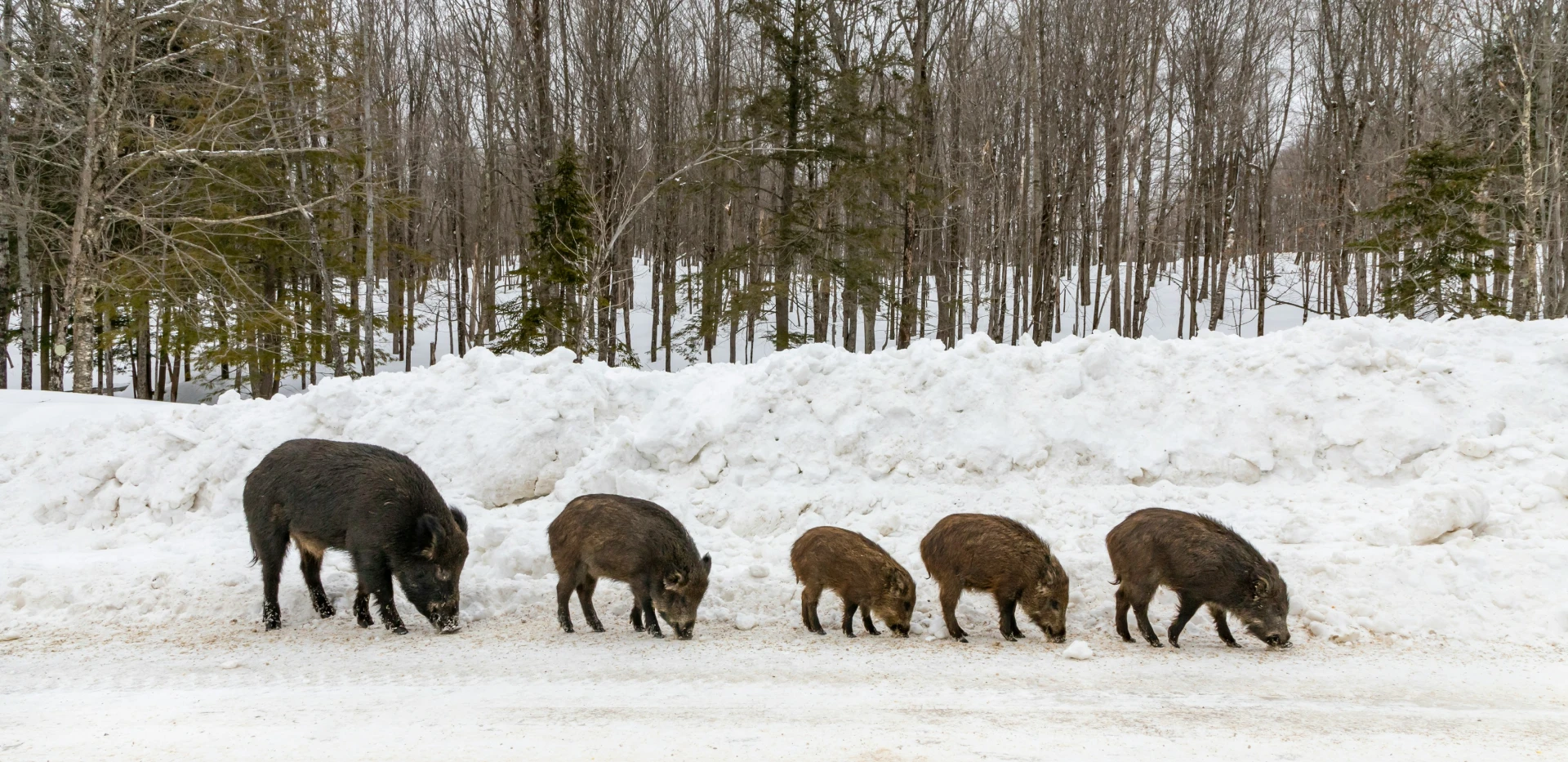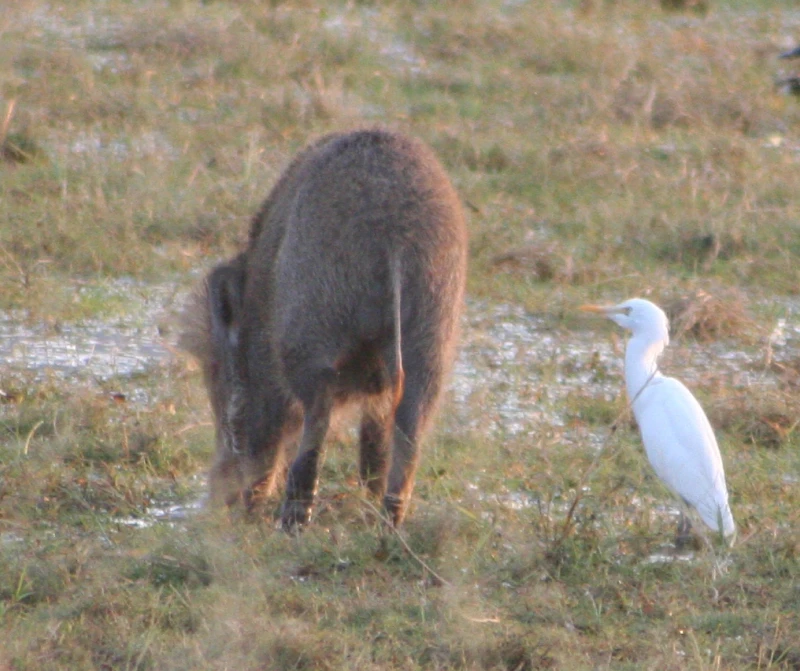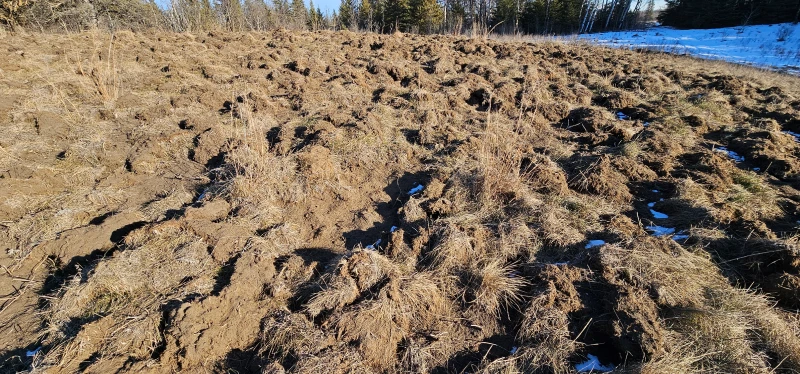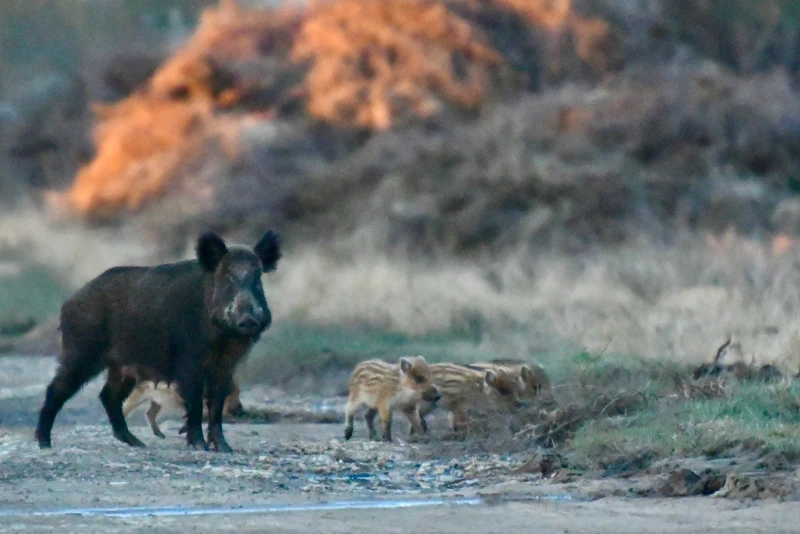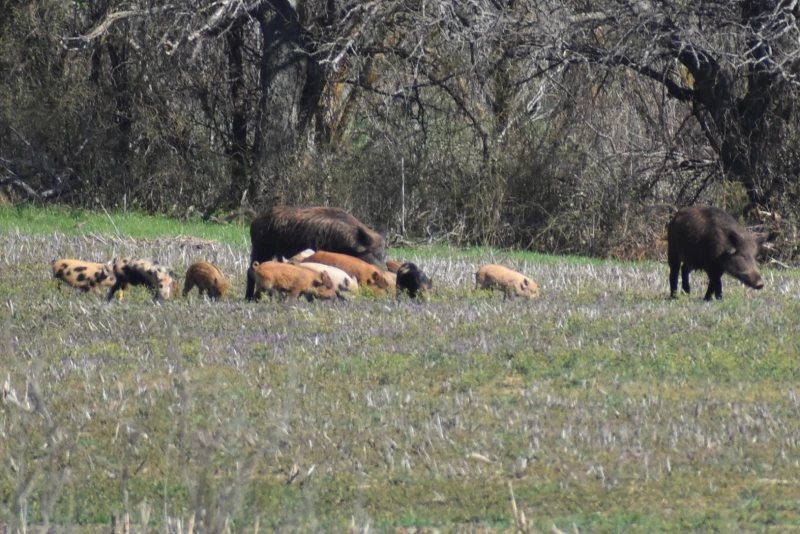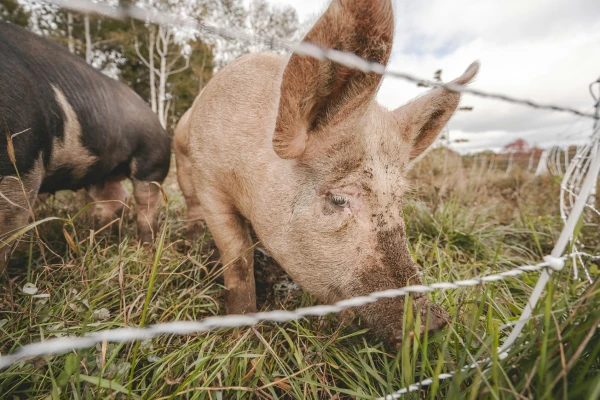Invasive wild pigs are considered one of the most damaging invasive species in the world due to their ability to reproduce quickly and spread across a wide range of environments. Originally from parts of Europe, Asia, and Africa, wild pigs are now found on every continent except Antarctica.1
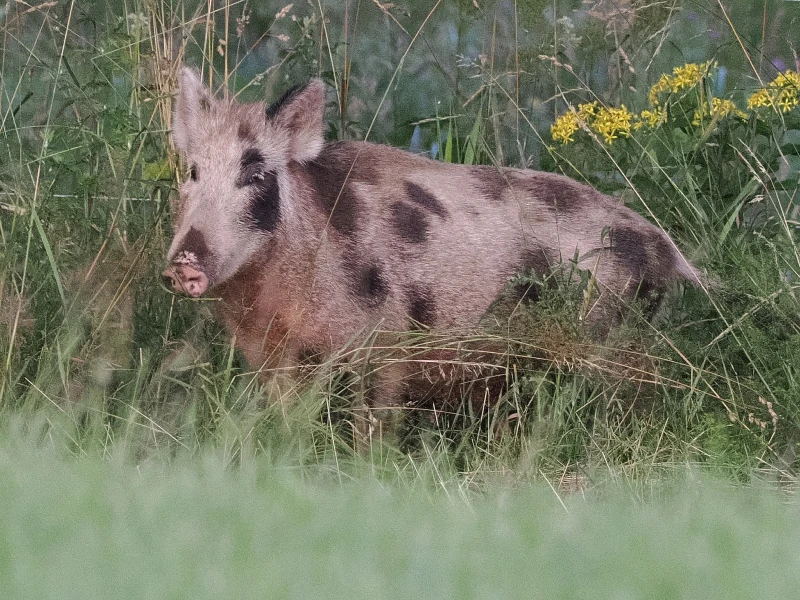
Jakob Fahr ©iNaturalist CC BY-NC
The Introduction of Pigs to Canada
Canada has no native pig species, but domestic pigs have been raised here as livestock since European explorers first arrived. In the 1980s, Eurasian wild boar were brought to Canada in larger numbers for meat production and hunting.
To increase production, Eurasian wild boar were crossbred with domestic pig breeds to increase their size and the number of piglets produced per litter. However, due to a lack of demand and an unstable market, wild boar farms went into decline in the 1990s.
It is believed that the majority of Canada’s invasive wild pig population in western provinces began with the escape and/or release of farmed Eurasian wild boar and their hybrids during this time.2,3
Canada’s Invasive Wild Pig Problem
Today, invasive wild pigs are considered to be any pig roaming freely outside of fences in Canada, whether domestic, Eurasian wild boar, or a hybrid of the two. Although free-roaming pigs are reported in provinces and territories across Canada, invasive wild pigs are only considered established (meaning they have self-sustaining populations) in Alberta, Saskatchewan, and Manitoba.
Managing invasive pigs in Canada is especially difficult. The country’s vast landscapes, combined with the intelligence and adaptability of wild pigs, make traditional hunting ineffective. In fact, removing only some pigs from a group often makes the rest harder to control, as they quickly learn to avoid traps and people.
To address this growing threat, Canada’s Invasive Wild Pig Strategy 2022–2032 emphasizes cross-regional collaboration and coordinated efforts to protect native wildlife, habitat, and agriculture.
Learn about invasive wild pig management efforts.
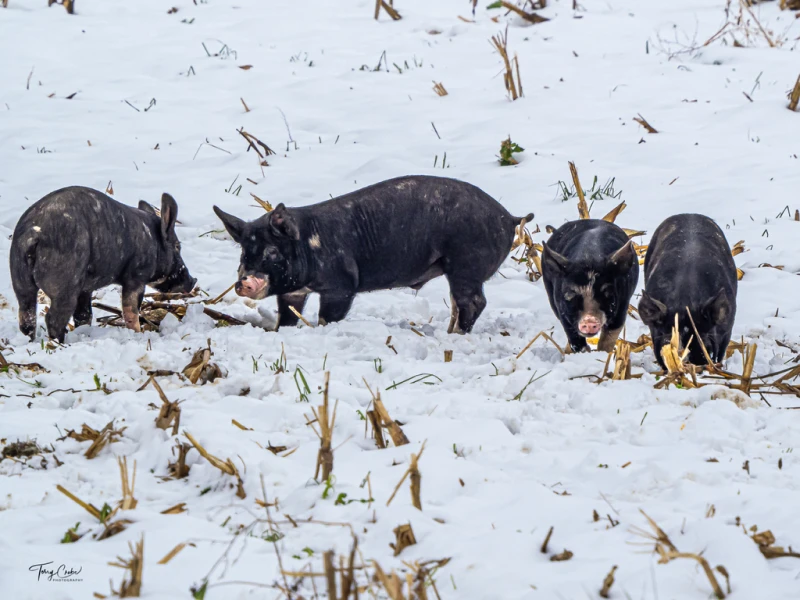
Terry Crabe © iNaturalist CC BY-NC
Provincial and Territorial Invasive Wild Pig Regulations
Pigs are incredibly strong and skilled at escaping enclosures. They can dig under fences, push through weak spots, or even jump over barriers (over 1.5m high!). While escapes from large commercial pig farms, where pigs are kept indoors, are uncommon, smaller farms with outdoor access tend to be more vulnerable. These operations may not have the capacity to maintain strong fencing and biosecurity measures needed to keep pigs contained.
Pet pigs can also become part of the problem. Some escape on their own, while others are released intentionally when they grow too large and become too difficult for their owners to manage.
Learn about initiatives to prevent and manage invasive wild pigs in Canada.
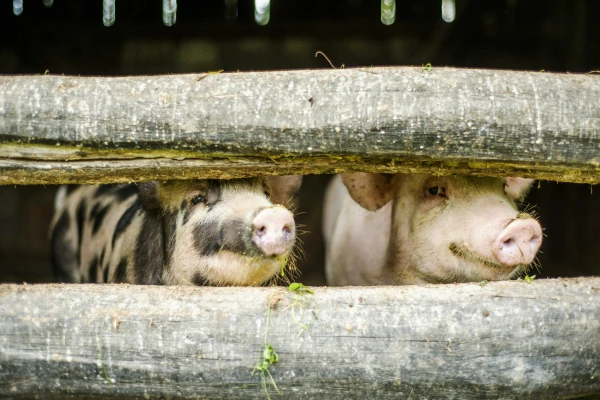
How Invasive Wild Pigs Thrive in the Wild
Pigs are remarkably adaptable and intelligent, and they grow and reproduce rapidly, enabling them to establish thriving populations in the wild in Canada and worldwide. The following traits have made them a successful invasive species.
Impacts to Canada
Invasive wild pigs can cause extensive ecological damage, pose significant risks to agriculture and Indigenous cultural resources, and can spread diseases to humans, wildlife, and livestock.

Hunters & Trappers
Hunters and trappers reporting sightings and signs of wild pigs is critical to protecting native habitat and wildlife, including game species impacted by wild pigs (ex. ground nesting birds, white-tailed deer).
How hunters and trappers can help:
Indigenous Nations & Communities
Indigenous Nations and communities are key leaders in protecting the lands, waters, and ecosystems we all rely on. As the original stewards with generations of knowledge in ecosystem management, Indigenous leadership is essential in addressing the threat of invasive wild pigs. Respecting Indigenous rights, supporting knowledge systems, and working in partnership are central to the success of wild pig management. The following actions can contribute to collective efforts to protect native species and ecosystems from invasive wild pigs.
What can be done:
Pet Pig Owners
By caring for your pet responsibly, you help protect wildlife and prevent the spread of disease.
What pet pig owners can do:
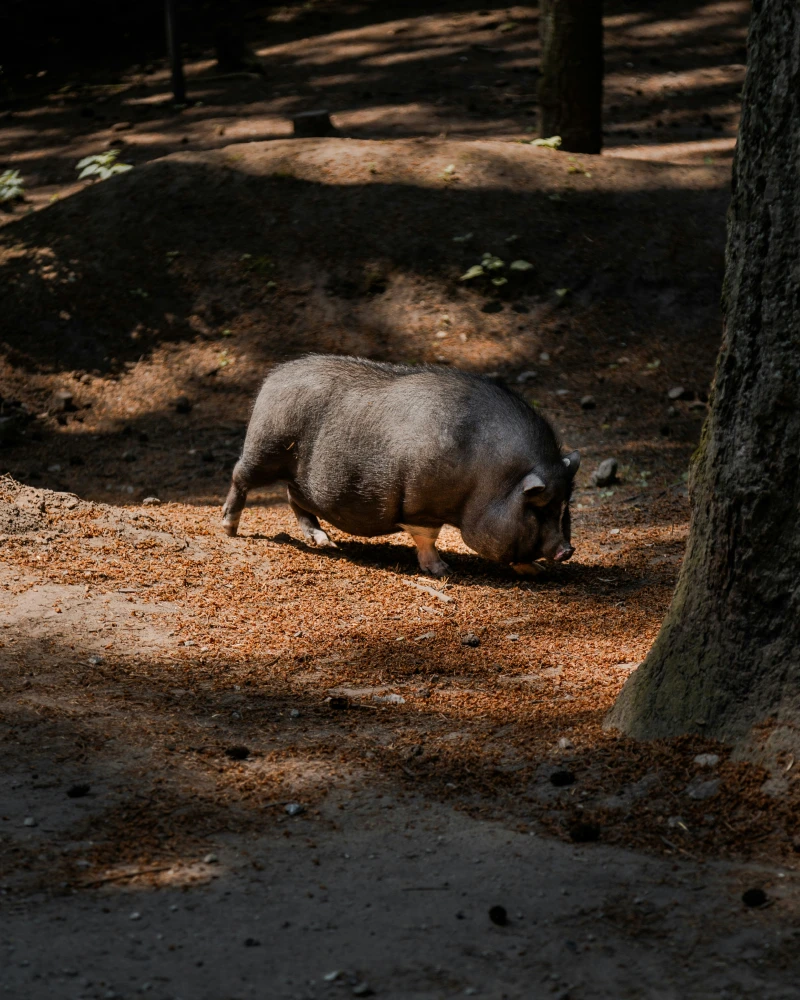
Hobby & Small-Scale Farmers
Small-scale farmers also play an important role in preventing the spread of invasive wild pigs.
How farmers can help:
Sources:
1Barrios-Garcia, M.N. & Ballari, S.A. (2012). Impact of wild boar (Sus scrofa) in its introduced and native range: a review. Biological Invasions, 14, 2283–2300.
2Brook, R. K., & van Beest, F. M. (2014). Feral wild boar distribution and perceptions of risk on the central Canadian prairies. Wildlife Society Bulletin, 38(3), 486-494.
3Michel, N. L., Laforge, M. P., Van Beest, F. M., & Brook, R. K. (2017). Spatiotemporal trends in Canadian domestic wild boar production and habitat predict wild pig distribution. Landscape and Urban Planning, 165, 30-38.
4Canada Invasive Wild Pig Strategy 230316.pdf (Page 20-21)
5Mayer, J. J., Mayer, J. J., & Brisbin Jr, I. L. (2009). Natural predators of wild pigs in the United States. Wild Pigs: Biology, Damage, Control Techniques, and Management. SRNL-RP-2009-00869. Savannah River National Laboratory, Aiken, SC, 193-204.
6Feral Swine: Managing an Invasive Species | Animal and Plant Health Inspection Service
7McKee, S.C., Psiropoulos, J.L. & Mayer, J.J. Frequency and vehicle damage costs of wild pig-vehicle collisions in the United States, 2015–2022. Eur J Wildl Res 70, 44 (2024). https://doi.org/10.1007/s10344-024-01792-5
8Gibbs E. P. J. (1997). The public health risks associated with wild and feral swine. Rev. Sci. Tech. Off. Int. Epiz. 16, 594–598.
9Meng, X. J., Lindsay, D. S., & Sriranganathan, N. (2009). Wild boars as sources for infectious diseases in livestock and humans. Philosophical Transactions of the Royal Society B: Biological Sciences, 364(1530), 2697-2707.
10Guberti, V., Khomenko, S., Masiulis, M., & Kerba, S. (2022). African swine fever in wild boar: ecology and biosecurity (Vol. 28). Food & Agriculture Org.
